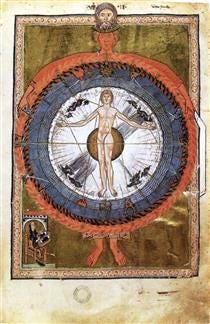
Does technology always mean progress? Recently, YouTube served me a video by Julia McCoy titled “AI Just Killed Video Production,” introducing Dzine AI — a new “revolutionary” tool that has, as she claims, collapsed the entire video production industry into a 60-second workflow.
It promises to replace the costly process of traditional video production — hiring a voice actor, an animator, and a video editor — with a $25-per-month subscription.
Surprisingly, the show’s host isn’t Julia herself but her AI clone, generated with Dzine AI. The real Julia appears only at the end.
You can take any image, any character, any style, and make it speak your exact words with perfect lip sync. Bottom line? Cut your costs. Cut your time. Maximize your profit.
When I watched this, a humorous quote from Danny Devito popped up in my mind:
“Artists must suffer for their art. That’s why it’s called painting.”
If you tell an artist that true art can be created without pain, they will cringe. It’s impossible. As Viktor Frankl said, “That which gives light must endure burning.”
Can you imagine Andrei Tarkovsky creating his masterpieces with Dzine AI? For him, the obvious question would be: Why? Why cut costs if the only way to create something worthy in this world is to bear the costs of its creation?
We must experience burning in order to give light. Epictetus revealed the same conundrum:
“No great thing is created suddenly, any more than a bunch of grapes or a fig. If you tell me that you desire a fig, I answer that there must be time. Let it first blossom, then bear fruit, then ripen.”
The joy of art is the joy of being pregnant with whatever you are bringing to life — for nine long months. To cut time short is to give stillbirth. That’s why so much modern art feels dead: it has been created too quickly, and too cheaply.
Great art must cost. When Gaudí was asked how long it would take to build Sagrada Familia, he answered: “My customer is not in a hurry.” He began working on it in 1882, and it’s still unfinished. Just like we are unfinished. The only reason to work on something is because it works on you.
Gaudí believed that as he worked on his temple, his temple worked on him. Ultimately, the ONLY reason to create is to be created. Creators create to be created — to come alive. All a creator wants is the experience of being made.
To delegate the creative process to AI is to miss out on the joy of mothering God into the world. We don’t want the pains of bearing the sacred in our womb — yet what is created cheaply will always feel cheap.
“What we obtain too cheap, we esteem too lightly: it is dearness only that gives every thing its value.” — Thomas Paine
The ultimate question is: how much of our joy are we willing to delegate? C.S. Lewis famously noted:
“We all want progress. But progress means getting nearer to the place where you want to be. And if you have taken a wrong turning then to go forward does not get you any nearer. … In that case the man who turns back soonest is the most progressive man.” — Mere Christianity
Are we any nearer to our goal — the experience of joy — when we refuse to take the pains of building our temple? Modern technology does not make us happy; it gives us hype. It promises progress but delivers regress — for true progress means moving closer to our goal, not farther away from it.
When it comes to joy, cheap and fast are regress. If we desire a fig, we must give it time. Joy is a fruit — the fruit of being made through the work of our hands.
When we bear the cost, we create something of value; when we chase what is cheap and fast, we are slowly being unmade.
He who turns back soonest is the most progressive man.






